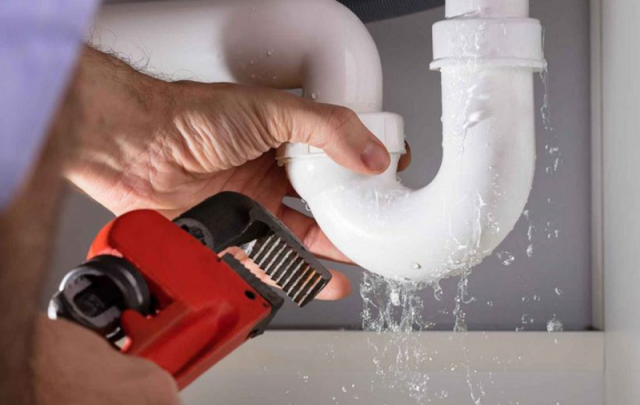You're just about to make a cup of tea when you hear water dripping from somewhere it shouldn't. A quick check reveals a spreading puddle beneath the kitchen sink and the race to stop the damage begins.
Plumbing emergencies don't wait for a convenient moment, but a bit of preparation can help keep a minor mishap from becoming a major disaster.
This guide will discuss practical steps you can take to prepare your home and your household for any unexpected plumbing issue.
Know Your Plumbing System Inside and Out
The first step to being prepared is understanding your home's plumbing layout. While it seems technical, getting familiar with the basics can help you act fast when something goes wrong.
Start by inspecting visible pipework around sinks, toilets, and appliances. Look for drips, corrosion, or discolouration. These are early signs of wear that could lead to bigger issues later.
Pay attention to slow drains and inconsistent water pressure, which often point to hidden clogs or leaks.
As you go, jot down anything unusual. Keeping a short log helps track changes over time and provides useful context for any plumber you may call in. Even a rough timeline of when issues started can be invaluable for diagnosis and repair.
By regularly reviewing these common areas, you'll be better positioned to catch small faults before they escalate into costly repairs.
Keep Essential Tools and Supplies at Hand
When a pipe bursts or a toilet overflows, the last thing you want is to be rummaging through drawers for a spanner. Having the right tools within easy reach can buy you valuable time before a professional arrives.
At minimum, you should keep:
-
A reliable plunger, adjustable wrench, and pipe tape;
-
A bucket, a few old towels, and a basic sealant;
-
A torch with spare batteries.
These items can help you contain leaks, shut off water supplies, or reduce water damage while you wait for assistance.
Store them somewhere accessible, such as under the kitchen sink or in a hallway cupboard, and check them every few months to make sure they're still in working condition.
Being able to act quickly and calmly during the first few minutes of a plumbing issue often makes all the difference.
Learn Where Your Main Water Shut-Off Valve Is
In any plumbing emergency, stopping the flow of water quickly is crucial. That's why every household member should know exactly where the main water shut-off valve is located and how to operate it.
In most UK homes, this valve can be found under the kitchen sink, near the water meter, or where the supply enters the building. Test it a few times a year to ensure it turns smoothly. If it's stiff or not sealing fully, it's worth getting it checked by a professional plumber.
To make the valve easy to find during an emergency, label it clearly with waterproof tape or signage. In a panic, even a few seconds saved can reduce water damage significantly.
Practising this simple task together as a household builds confidence and readiness, especially for younger or less experienced family members.
Create a Simple Emergency Response Plan
Knowing what to do, and who to call, can ease the stress of any plumbing disaster. Having a few basic plans in place can save you from delays and confusion when every minute counts.
First, compile a short list of reliable contacts.
This should include the name and number of a local plumbing professional, your home insurance provider, and possibly your landlord if you're renting.
Store these both in your phone and somewhere visible, such as on the fridge or inside a utility cupboard.
It's also worth making a brief guide for household members. This doesn't need to be complex just a printed sheet outlining steps like turning off the water supply, using towels to contain flooding, and calling for professional plumbing help.
This kind of forward planning gives everyone in the home a clear course of action and reduces the chance of panic or missteps when time is short.
Put Together a Dedicated Plumbing Emergency Kit
Beyond tools and contact details, a basic emergency kit can help you respond effectively to water-related incidents. This should include a torch, rubber gloves, and a small first-aid kit, along with any quick-fix items like sealant or waterproof tape.
A pack of absorbent cloths or kitchen towels can also be helpful for soaking up smaller leaks. Keep everything together in a watertight box stored near the main valve or another central location.
It's a good idea to inspect the kit once or twice a year, replacing expired items and checking for missing tools. A well-stocked kit not only helps reduce damage but also gives you peace of mind knowing you're ready to respond quickly.
Involve Everyone in the Household
Plumbing emergencies aren't just the homeowner's responsibility. Everyone in the household should have a basic understanding of what to do if a pipe bursts or a tap won't stop running.
Take a few minutes to show each member where the main shut-off valve is and explain how to turn it off. Run through what tools they could need and where they're stored.
For children or older adults, simple instructions, kept in plain sight, can make a big difference in an emergency.
When everyone knows what to do, you reduce the risk of delays and limit potential damage. You'll also help build a sense of shared responsibility, which makes the household more resilient overall.
Don't Skip Routine Maintenance
Preventing emergencies in the first place is always easier and less expensive than dealing with the fallout. That's why regular plumbing maintenance should be part of your overall home care plan.
It's worth booking a professional plumber to inspect your system every couple of years. These check-ups can spot signs of corrosion, leaks, or inefficiencies that might not be obvious from the surface. They'll also ensure fittings, joints, and appliances meet current safety standards.
Make a note of each inspection, including the date, any recommendations, and what was repaired. Whether you use a digital note or a simple paper log, this record will help you track recurring issues and plan future servicing more efficiently.
Proactive care often extends the lifespan of your plumbing and keeps your home running smoothly, while sparing you the stress and cost of unexpected repairs.
Conclusion
Plumbing emergencies don't come with a warning, but preparation gives you the power to handle them with confidence.
From knowing your shut-off valve to having the right tools and contacts nearby, every small step counts. Getting your household involved and scheduling regular maintenance helps you stay ready, avoid major damage, and respond swiftly when it matters most.
If you're dealing with frequent plumbing issues or would like a professional to assess your system, reach out to a trusted local plumber for expert support.






